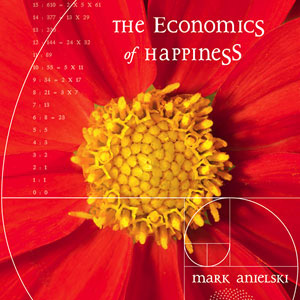 THUNDER BAY – When it comes to making communities better, there are many means of measuring success. The Federation of Canadian Municipalities (FCM) have unveiled the winners of its 2011 Sustainable Communities Awards. This is a program recognizing municipal environmental projects across Canada that demonstrate excellence in environmental responsibility. Thunder Bay was not on the list.
THUNDER BAY – When it comes to making communities better, there are many means of measuring success. The Federation of Canadian Municipalities (FCM) have unveiled the winners of its 2011 Sustainable Communities Awards. This is a program recognizing municipal environmental projects across Canada that demonstrate excellence in environmental responsibility. Thunder Bay was not on the list.
“This year’s award winners are prime examples of the type of environmental leadership communities are showing on the front lines of sustainable development in Canada,” said Hans Cunningham, president of FCM and director of the Regional District of Central Kootenay, B.C. “Municipalities are where the rubber hits the road on sustainable development and climate change.”
 One of the winning communities was Calgary. A program called imagineCALGARY engaged over 18,000 residents. Starting in 2005, 18,000 citizens of Calgary worked together to envision their future well into the next century. The process that established the city’s long-term vision was called imagineCALGARY. In 2007, city council launched a similar process, known as Plan It Calgary, to integrate land use and mobility plans to guide policies and actions for the next 60 years. The Plan It Calgary initiative set the stage for residents to begin to understand how the city will accommodate both new growth and the needs of its aging residents.
One of the winning communities was Calgary. A program called imagineCALGARY engaged over 18,000 residents. Starting in 2005, 18,000 citizens of Calgary worked together to envision their future well into the next century. The process that established the city’s long-term vision was called imagineCALGARY. In 2007, city council launched a similar process, known as Plan It Calgary, to integrate land use and mobility plans to guide policies and actions for the next 60 years. The Plan It Calgary initiative set the stage for residents to begin to understand how the city will accommodate both new growth and the needs of its aging residents.
The Plan It Calgary initiative lasted two years and involved some 6,000 Calgarians. Residents were invited to participate in a range of activities, including telephone surveys, town hall meetings, a two-day summit, 10 public open houses, three design-based charettes, and more. Building on the success and processes of imagineCALGARY, Plan It Calgary created a new municipal development plan and transportation plan, which were both passed by city council in September 2009. The city plans to measure the impact of its two new planning documents through a series of indicators and targets, and report on these to residents every three years. The indicators will also help to set business planning priorities and budgets within the city.
Naturally imagineCALGARY has effectively used video to engage residents. (http://www.imaginecalgary.ca/icalgaryTV24.php) They formed iCalgaryTV to share ideas. The lessons demonstrated in Calgary, as just one example demonstrate what can happen in a community that engages its citizens.
That is one of the keys to a successful community.
In total, the FCM Awards are designed to shine a light on municipal projects that can inspire other Canadian communities to undertake similar initiatives, and that provide a solid basis upon which constant improvements can be made to increase the quality of life of all citizens and the quality of the environment.
As opposed to a comparative ranking, FCM awards top honours to winning municipalities in each of nine categories: brownfields, buildings, energy, integrated neighbourhood development, planning, residential development, transportation, waste and water.
The awards were announced at a reception and awards ceremony during FCM’s Sustainable Communities Conference and Trade Show (SCC) in Victoria, B.C. Victoria, in partnership with the Capital Regional District, was chosen to welcome more than 500 delegates to Canada’s premier municipal sustainability event. This year marks the first time that the Awards have been presented at the SCC.
FCM’s Green Municipal Fund™ (GMF) is the primary sponsor of the Sustainable Community Awards. The Government of Canada endowed FCM with $550 million to establish the Fund.
“This year’s award winners show how municipalities can successfully innovate, develop and implement sustainable initiatives by mobilizing city council, municipal civil services, municipal partners, and the community to foster change,” added Karen Leibovici, chair of the GMF Council, second vice-president of FCM and councillor for the City of Edmonton, Alberta. “They are at the forefront of what the Sustainable Communities Conference is all about.”
The winners of the 2011 FCM Sustainable Community Awards are:
- Brownfields: Town of the Blue Mountains, Ont. — Blue Mountains Town Hall
- Buildings: City of Calgary, Alta. — Renovation of the Historic Calgary Public Building
- Energy (two winners): City of Medicine Hat, Alta. — HAT Smart Renewable Energy and Conservation Program; and City of Montréal, Que. — City of Montréal Energy Fund
- Integrated neighbourhood development: City of Burnaby, B.C./SFU Community Trust — UniverCity Community at Simon Fraser University
- Planning (two winners): City of Calgary, Alta. — Plan It Calgary; and City of Yellowknife, N.W.T. — City of Yellowknife Smart Growth Development Plan
- Residential development: City of Victoria, B.C. — Making Secondary Suites Easier
- Transportation: City of Toronto, Ont. — City of Toronto Walking Strategy
- Waste: Regional District of Nanaimo, B.C. — Zero Waste Program
- Water (two winners): Town of Olds, Alta./Waste Not Ltd. — Wastewater Wonder; and Village of Victoria, P.E.I./Engineering Technologies Canada Ltd. — Water and Wastewater Pilot Project
